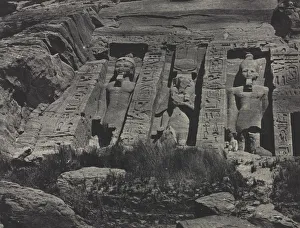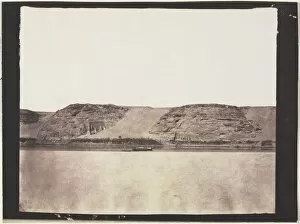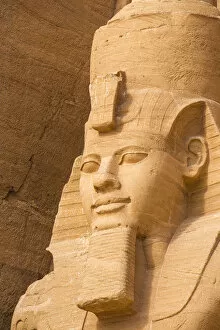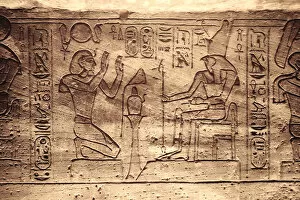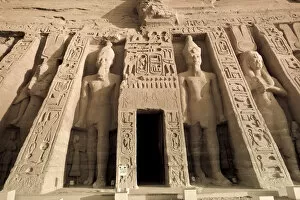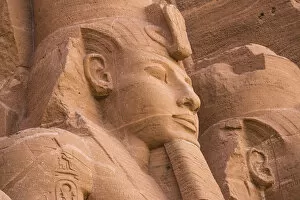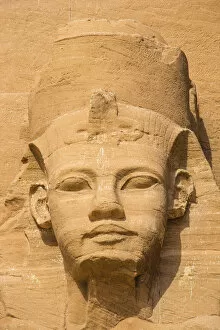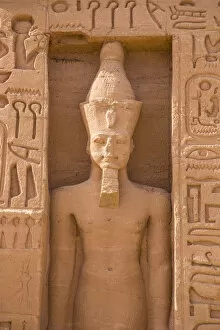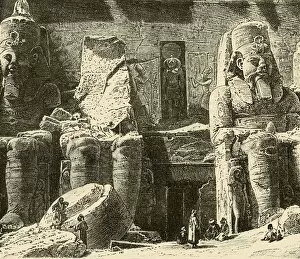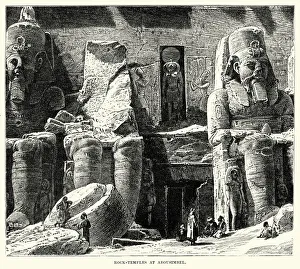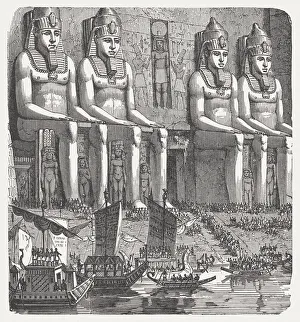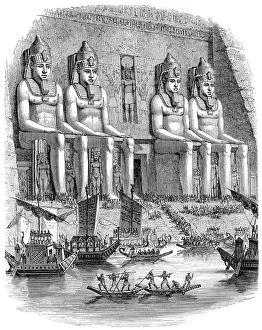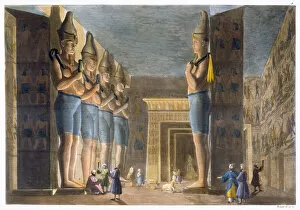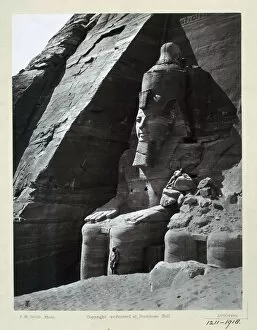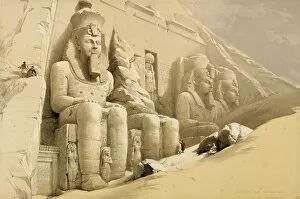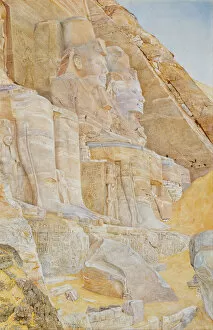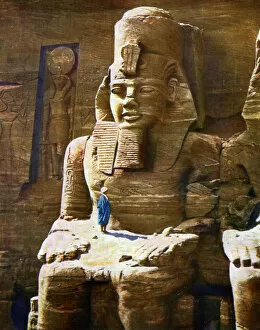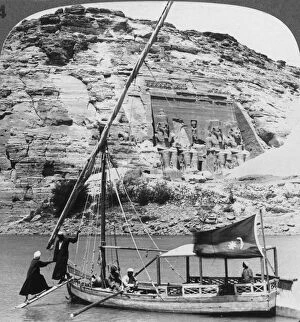Nubian Monuments from Abu Simbel to Philae Collection (page 5)
The Nubian Monuments of Egypt are a collection of ancient sites located in the southern region of Egypt, known as Nubia
706 items
All Professionally Made to Order for Quick Shipping
-
Nubian Monuments from Abu Simbel to Philae Collection
The Nubian Monuments of Egypt are a collection of ancient sites located in the southern region of Egypt, known as Nubia. These monuments span from Abu Simbel in the south to Philae in the north and include some of the most impressive and well-preserved archaeological sites in Africa. The most famous is Abu Simbel, which was built by Pharaoh Ramses II around 1250 BC and consists of two massive temples cut into a mountainside. Other notable monuments include Kalabsha Temple, Elephantine Island, Wadi es-Sebua Temple, Qasr Ibrim Fortress, and Philae Temple. Each monument is unique and offers insight into the history and culture of Ancient Egypt as well as its relationship with other African cultures. Together they form an important part of Egypt's cultural heritage that should be preserved for future generations to appreciate.
+
Our beautiful pictures are available as Framed Prints, Photos, Wall Art and Photo Gifts
The Nubian Monuments from Abu Simbel to Philae collection is a stunning display of ancient Egyptian architecture and art. Our collection , available on Media Storehouse, features wall art, framed prints, photo prints, canvas prints, jigsaw puzzles and greeting cards that showcase the beauty of these heritage sites in Egypt. The monuments were built during the reign of Pharaoh Ramses II in the 13th century BC and are located along the Nile River between Aswan and Abu Simbel. The most famous monument in our collection is undoubtedly the Temple of Abu Simbel which was carved out of solid rock. It features four colossal statues of Ramses II at its entrance and has been designated as a UNESCO World Heritage Site since 1979. Other notable monuments include the Temple of Philae which was dedicated to goddess Isis and also features intricate carvings. Our collection offers an opportunity for individuals to bring a piece of ancient history into their homes or offices through high-quality reproductions that capture every detail with precision.
+
What are Nubian Monuments from Abu Simbel to Philae (Egypt Heritage Sites Egypt Africa) art prints?
Nubian Monuments from Abu Simbel to Philae are a series of art prints that showcase the rich cultural heritage of Egypt in Africa. These monuments were built during the ancient Nubian civilization and have stood the test of time, surviving for thousands of years. The prints feature stunning images of these magnificent structures, including temples, tombs, and statues. Abu Simbel is one of the most famous sites in this collection. It features two massive rock temples that were carved out of a mountainside during the reign of Pharaoh Ramesses II. The temples are adorned with intricate carvings and hieroglyphics that tell stories about Egyptian mythology and history. Philae is another important site included in these prints. It was once an island temple dedicated to the goddess Isis but was relocated due to flooding caused by the construction of Aswan High Dam. These art prints offer a glimpse into Egypt's fascinating past and serve as a reminder of its enduring legacy.
+
What Nubian Monuments from Abu Simbel to Philae (Egypt Heritage Sites Egypt Africa) art prints can I buy from Media Storehouse?
We offer a wide range of Nubian monuments art prints from Abu Simbel to Philae, which are part of Egypt's heritage sites in Africa. These art prints capture the beauty and grandeur of these ancient structures that have stood the test of time. You can choose from a variety of sizes and formats, including canvas prints, framed prints, and photographic prints. Some popular options include images of the Great Temple at Abu Simbel with its colossal statues of Ramses II, as well as intricate carvings on the walls depicting scenes from Egyptian mythology. The Temple of Isis at Philae is another popular subject for art prints, featuring stunning columns adorned with hieroglyphics and intricate reliefs. Whether you're looking to decorate your home or office with beautiful artwork or simply want to add some cultural flair to your space, we have something for everyone when it comes to Nubian monuments art prints.
+
How do I buy Nubian Monuments from Abu Simbel to Philae (Egypt Heritage Sites Egypt Africa) art prints?
To buy Nubian Monuments from Abu Simbel to Philae art prints, you can visit our online gallery. The website offers a wide range of high-quality art prints featuring the iconic heritage sites of Egypt. You can browse through the collection and choose your favorite print based on size, framing options, and other preferences. Once you have selected your desired print, simply add it to your cart and proceed to checkout. At this point, you will be prompted to enter your shipping and payment details. We accept various forms of payment such as credit cards, PayPal, and Apple Pay. After completing the purchase process, your order will be processed by our team of experts who ensure that each print is produced with exceptional quality standards. Your artwork will then be shipped directly to your doorstep in a timely manner without any hassle or delays. Buying Nubian Monuments from Abu Simbel to Philae art prints from Media Storehouse is an easy and convenient way to own beautiful pieces of Egyptian history for display in your home or office space.
+
How much do Nubian Monuments from Abu Simbel to Philae (Egypt Heritage Sites Egypt Africa) art prints cost?
We offer a wide range of Nubian Monuments art prints from Abu Simbel to Philae, which are part of Egypt's Heritage Sites in Africa. The cost of these art prints varies depending on the size and type of print you choose. We have various options available such as canvas prints, framed prints, and photographic prints. Our prices are competitive and affordable for everyone who wants to own a piece of history through our high-quality art prints. Our Nubian Monuments art prints showcase the beauty and grandeur of these ancient structures that have stood the test of time. They make excellent additions to any home or office decor, adding a touch of elegance and sophistication to your space. Whether you're an avid collector or simply looking for something unique to decorate your walls with, our Nubian Monuments art prints are sure to impress.
+
How will my Nubian Monuments from Abu Simbel to Philae (Egypt Heritage Sites Egypt Africa) art prints be delivered to me?
Your Nubian Monuments from Abu Simbel to Philae art prints will be delivered to you via a reliable and secure delivery service. We take great care in ensuring that your order is packaged safely and securely, so that it arrives at your doorstep in pristine condition. Our team of experts carefully print each image on high-quality paper using state-of-the-art technology, ensuring that the colors are vibrant and true-to-life. Once printed, we package your order with care and send it off for delivery. You can expect your Nubian Monuments art prints to arrive within a reasonable timeframe, depending on your location. We work hard to ensure that our customers receive their orders promptly and efficiently. We're confident that you'll love the quality of our products and the convenience of our delivery service. Whether you're looking to decorate your home or office, or simply want a beautiful piece of artwork to admire, we have got you covered.






